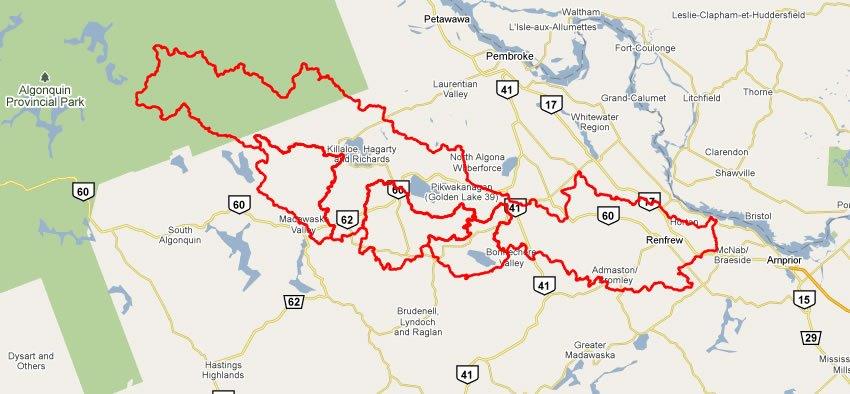- How will the Thomas Low GS affect our environment?
- What type of environmental assessment was conducted?
- What is the Bonnechere River Water Management Plan (BRWMP)?
- What area does the Bonnechere River Watershed include?
- What’s the link between RPG and Green Energy?
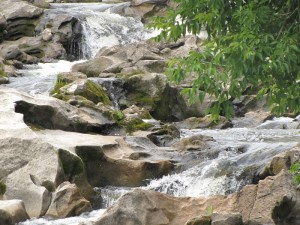 How will the Thomas Low Generating Station affect our environment?
How will the Thomas Low Generating Station affect our environment?
Maintaining flows, levels, protecting species and managing habitat, and erosion control are all part of RPG’s commitment to conducting business responsibly and in an environmentally-friendly way. RPG manages the water levels and flows on the Bonnechere River. These levels and flows were determined as a result of a comprehensive process in which the Ministry of Natural Resources, RPG, other power producers, representatives of the Algonquins, a Standing Advisory Committee consisting of a group of dedicated volunteers, and many stakeholders interested in the health of the Bonnechere River worked together.
- Flows/levels: RPG will maintain the existing flows or levels upstream and downstream—a legal requirement set out in the Bonnechere River Water Management Plan. That includes providing a residual flow between mid-April and the end of May to maintain spawning habitat at specific areas of the system.
- Maximizing use of water in high flow: RPG has increased its capacity to capture excess water in high flow times—usually, spring freshets in which snow melt causes sudden increases in water flows. Previously, excess water couldn’t be processed and was diverted through a spillway to release the water from the upstream side of the dam to the downstream side. Click Here to learn more about News & Reports.
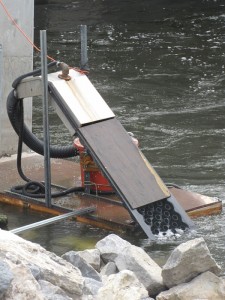 Fish rescue and relocation and the recovery strategy for the American Eel: The once abundant American Eel—a significant cultural and spiritual symbol for the Algonquins, and highly valued by European settlers— is now listed on Ontario’s Endangered Species. RPG worked with the Algonquins to develop the strategy because RPG is located within their territorial area.
Fish rescue and relocation and the recovery strategy for the American Eel: The once abundant American Eel—a significant cultural and spiritual symbol for the Algonquins, and highly valued by European settlers— is now listed on Ontario’s Endangered Species. RPG worked with the Algonquins to develop the strategy because RPG is located within their territorial area.
- The recovery strategy includes a specially designed intake rack to aid the safe passage of eels around RPG turbines. Two other traps have been installed to trap migrating eel so RPG can transfer them to the upstream and downstream side of the dams.
- Current science suggests the American Eel consists “of a single breeding population which travels to the Sargasso Sea in the Atlantic Ocean to spawn.”
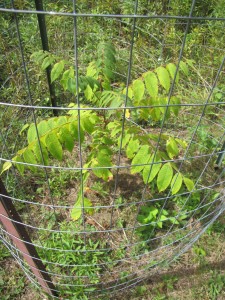 Replanting of butternut trees: RPG planted 25 seedlings and will monitor and report on the health status, annually, for five years. As an endangered species, RPG must commit to ensuring at least 50% of the trees survive.
Replanting of butternut trees: RPG planted 25 seedlings and will monitor and report on the health status, annually, for five years. As an endangered species, RPG must commit to ensuring at least 50% of the trees survive.- Noise attenuation: RPG has received a certificate of approval from the Ministry of Environment after filing a report on steps RPG is taking to contain noise within acceptable levels from its operations.
- Emergency Response Plan: RPG has a plan to deal with emergencies as a result of fire, hazardous materials spills etc. to reduce or mitigate the impact on human life, the facilities and the environment.
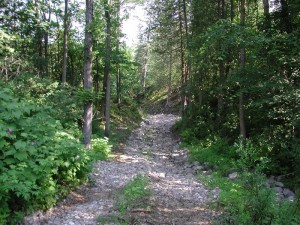 What type of environmental assessment was conducted?
What type of environmental assessment was conducted?
- Environmental assessments, required by law, identify potential effects of projects and require solutions that either avoid or reduce the impact on the environment. The RPG project was subject to the Ontario Class Environmental Assessment (Class EA) for Waterpower Projects, and categorized as a project associated with existing infrastructure. It was also screened under the Canadian Environmental Assessment Act. RPG implemented solutions at its cost.
- Reports and supporting documents can be found by following this link: News and Reports.
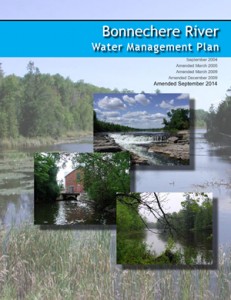 What is the Bonnechere River Water Management Plan?
What is the Bonnechere River Water Management Plan?
- No matter where we live, our rivers and their quality, are vital to our health, economy, recreation, and fish and wildlife. Changes in water levels and flows because of power production, or Mother Nature’s droughts or floods can affect many users and uses.
- The Bonnechere River Water Management Plan (BRWMP) strikes that balance by regulating water flow and levels for four waterpower producers, including RPG, on the Bonnechere River. The BRWMP is the result of extensive work by the Ministry of Natural Resources, the Public Advisory Committee including the Algonquins of Pikwàkanagàn, landowners, municipal leaders, and citizens. Other agencies included: the Ontario Ministry of the Environment, the Ontario Ministry of Agriculture and Food, and Fisheries and Oceans Canada. Waterpower producers on the Bonnechere River watershed—Renfrew Power Generation, Eganville Generation, MultiStream Power, and Vornweg Power provided important historical data on flow and level management on the Bonnechere River and contributed staff time, and financial and technical assistance during the review and planning process.
- The BRWMP:
- Meets the requirements of existing and new legislation and regulations in the management of flows and levels on the Bonnechere River
- Applies a system-wide, comprehensive approach to managing flows and levels within the Bonnechere River
- Balances the environmental, social and economic benefits of the river’s resources, and to ensure the sustainability of those resources for future generations
- Maintains or improve the aquatic and riparian ecosystem of the Bonnechere River
- Through consultation, improves the public understanding of the issues related to the management of flows and levels on the Bonnechere River
- The full report and the BRWMP Standing Advisory Committee minutes can be accessed here.
What area does the Bonnechere River Watershed include?
Bonnechere River’s source or headwaters is McKaskill Lake in Algonquin Park. Once a key transportation corridor, the Bonnechere River first attracted First Nations people, followed by fur traders, lumbermen and settlers. Between 1847 and 1853, at least 23 dams and slides were constructed on the Bonnechere to transport logs down the river.
The 145 kilometre river changes from clear and cold at Algonquin Park to warm and turbid as it approaches the Ottawa River—meandering through forests, farmlands, towns and villages, cottage areas, and woodlands—emptying into the Ottawa at Castleford through a provincially significant wetland.
The Bonnechere flows through eight municipalities and with the exception of the Town of Renfrew—are largely rural residential. They include: Madawaska Valley (Township), Round Lake (Killaloe-Hagarty-Richards Township), Pikwàkanagàn (First Nation Reserve on Golden Lake), Golden Lake (North Algoma, Wilberforce Township), Eganville (Township of Bonnechere Valley), Douglas (Admaston-Bromley Township), and Horton Township.
The Bonnechere River generally is navigable with the exception of portages at five well-known chutes or falls, and at several rapids. It flows through Round Lake and Golden Lake, two of the largest lakes in Renfrew County, and Lake Clear which is connected to the Bonnechere by Hurds Creek.
What’s the link between RPG and Green Energy?
- Hydroelectricity or waterpower produced by RPG is “green” because it is a reliable, clean, local and naturally recurring source of energy.
- The door opened to expand and upgrade RPG when the Ontario’s Green Energy Act was created to expand renewable energy, encourage energy conservation, and create jobs in green energy.
- One of Ontario’s major initiatives was to end coal-fired hydro—to reduce harmful emissions, and produce cleaner air and a healthier environment. To replace coal-fired generation (approximately 25% of Ontario’s electrical generation), Ontario introduced a number of incentives to stimulate growth in emission-free energy sources such as hydro, wind, solar, and nuclear, along with lower-emission energy sources like natural gas and biomass.
- To help stabilize prices and have an adequate supply, Ontario negotiated long-term contracts with generating facilities connected to the electricity grid managed by Ontario’s Independent Electricity System Operator (IESO). RPG signed a 20-year contract in 2010 with the Ontario Energy Board which has been amalgamated within IESO. The rates which are expected to increase are being renegotiated as a result of the new TLGS.
- In 2014, Ontario became the first jurisdiction in North America to become “coal-free” by eliminating coal as a source of generating electricity.
Click Here to learn more about the Ministry of Energy’s message about coal-free hydro generation.

